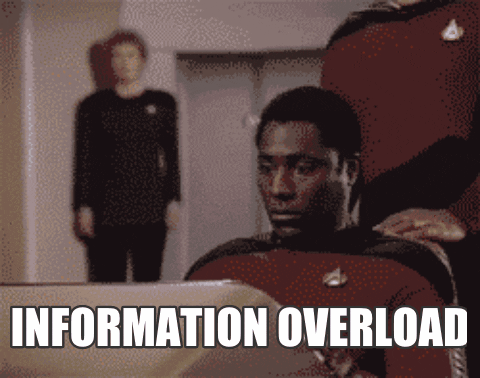When unsure attempts to attract all customers in one way did not justify the objectives of the business, technology and proper UX in combination with psychology and neuromarketing took their rightful place. We have learned to see the world through the eyes of online customers and form loyalty through a dialogue with our subconscious.
Some are looking for the best price, others pay attention to the quality of the product, and others expect a personalized approach and service. Learn to recognize them and you can not only reach the heights in online commerce but also make each user feel that he is understood here. If you don’t learn, you’ll still have to act.
9 types of online customers: What do they need?
The hesitant shopper

He is always unsure of his decisions and tries to put them off until “tomorrow”.
The main problem is that he always needs to take a break and think over the choice once again, but in the end, he can make a spontaneous purchase in another place, where the pictures of goods are brighter, and managers know how to convince him in the absence of alternatives.
Such a customer should be “held by the hand” to the purchase.
Help him choose by placing detailed descriptions on the page.
Provide brief instructions on how to order the product and a clear description of the terms of delivery.
From the very first interaction with your customers, make sure they understand why they are important to your store: disclose their warranty benefits, and provide detailed information on checkout and return policies.
The advanced buyer
This is a professional online shopper who doesn’t need to be convinced that you have the best price or products that will always be relevant.
He is guided by convenience and benefit when making a purchasing decision.

Such buyers are easily frightened off by the confusing structure of the catalog, complicated order forms, and other signs of poor service organization, so pay special attention to the details of the interface and the process of placing an order.
Despite their rationality, advanced shoppers may make additional unplanned purchases if they can justify the value to themselves. For example, they respond well to offers of related products, realizing that it is easier and more profitable to buy everything they need in one place and at once
The practical buyer
These people strive to buy products that fit their current needs exactly, and they don’t like to overpay. That’s why they are looking for the best option in terms of price and quality.
There is no need to lead such a client astray – he is well acquainted with the classic ways of attracting customers. Practical customers are best motivated to purchase by detailed product descriptions and video reviews, reviews of other buyers, etc. They love to compare and analyze. Allow them to enjoy it to the fullest.
The informed buyer
This type of online shopper knows exactly what he is going to buy, but does not mind making sure that his decision is correct. So he encourages himself for his intelligence and perspicacity.

Attracting such a client is easy. Include descriptions with detailed specifications, and tell him what quality standards the goods meet, and how cool it is. Do everything to make him feel like an expert and convince him over and over again that his decision is the right one.
Using the social proof principle is great for this purpose, such as stating how many people have bought or reviewed a particular product. Using the principle of social proof in trigger mailings of Mamsy, a closed sale club, increased conversion rates by 60.5%.
The passerby
These are people who have come into your store for some reason but don’t yet have any opinion about the brand or the products. They have no goal to buy anything in particular, and may not even have a goal to buy anything at all, but if you can show them something interesting, they can easily make a purchase. A casual shopper can be compared to someone brought to the store by his wife or sister; the kind of bored person who looks at the merchandise and might buy something.
The most effective way to keep this type of customer on the site – it’s clear structure and catchy elements describing products. This type of client is attracted by elements of gamification and all kinds of entertainment. For example, video reviews, interesting descriptions, 3D images of goods, etc.
The social shopper
These shoppers rarely pay attention to descriptions, features, or even photos of products on the site, but are always willing to buy something on the advice of acquaintances or opinion leaders.
Social shoppers often find their future purchases on social networks. Instagram is the best platform for finding such customers. Be sure to have a “Share” button on product pages, and allow discussing products in comments.
And if you manage to attract opinion leaders, social shoppers will make a real pilgrimage to your online store. Remember that quality has to be impeccable because otherwise, all your efforts will backfire.
The emotional shopper
A characteristic of emotional buyers is regular spontaneous purchases. That is, coming to your site they don’t even know what they want to buy, they just need positive emotions. Bright pictures and attractive banners motivate them much more than detailed descriptions and delivery terms.
When working with emotional shoppers, it’s important not to miss the moment, so be sure to take care of a quick buy so that the emotional shopper can place an order at the peak of inspiration, leaving only their name and phone number.

Trigger mailings also work great for emotional shoppers, with reminders of items forgotten in the cart or reviewed. And if there are also special conditions, such as reduced price, it’s a sure way to get the impulsive customer back to buying. For example, Sela online store increased its key metrics with the “Price reduction in cart” scenario: Open Rate by 82.7%, CTR by 21.4%, and conversion rate by 128.6%.
Scrooge
These shoppers are very price sensitive. They choose goods based on cost, sometimes overlooking quality or convenience of service.
If you don’t have the lowest prices on the market, you will have to convince the curmudgeon that there is a benefit. For example, bundle several products into one set and offer it at a discount. Promotions and bonuses are another way to make an impact. Scrooges love bright offers, ready to make an immediate purchase at a good discount. And they also like discounted products. So create a separate section of discounted goods for them.
You can also justify the price by demonstrating the unique qualities of the product, free shipping, or a long warranty. If the curmudgeon appreciates the uniqueness of the offer, he will purchase without hesitation, despite his natural greed.
A fan of the brand
This is the most pleasant and profitable type of customer for the store. They are willing to shop just to support their favorite brand or store. They are the easiest to engage in brand activities, participate in surveys and express their opinions about products and services.
For their loyalty, brand fans expect special treatment and extra attention. If they receive rewards for their actions, their love grows even stronger and they become full-fledged brand advocates.
They love special offers and exclusive content; it keeps them loyal. That said, to motivate them to make new purchases, it’s often enough just to send them information about new products in the range or special offers. If you have an opportunity to take these loyalty programs into account in your communications with the client, do not neglect it. For example, the online store Westland includes products in its mailing lists, taking into account the subscriber’s loyalty program discounts and information about the customer’s status.
Final thoughts
All customers are valuable to an online store, whether they are regular customers or those who came to the site by chance and made a single purchase.
One way or another, the ultimate goal of the company is to sell and make a profit. At the same time, customers differ in their behavior: for example, a sale announcement may bring in users who will buy only during one campaign and won’t come back.
Regular customers, on the other hand, are more likely to choose a store they like because it fully meets their needs.
0


